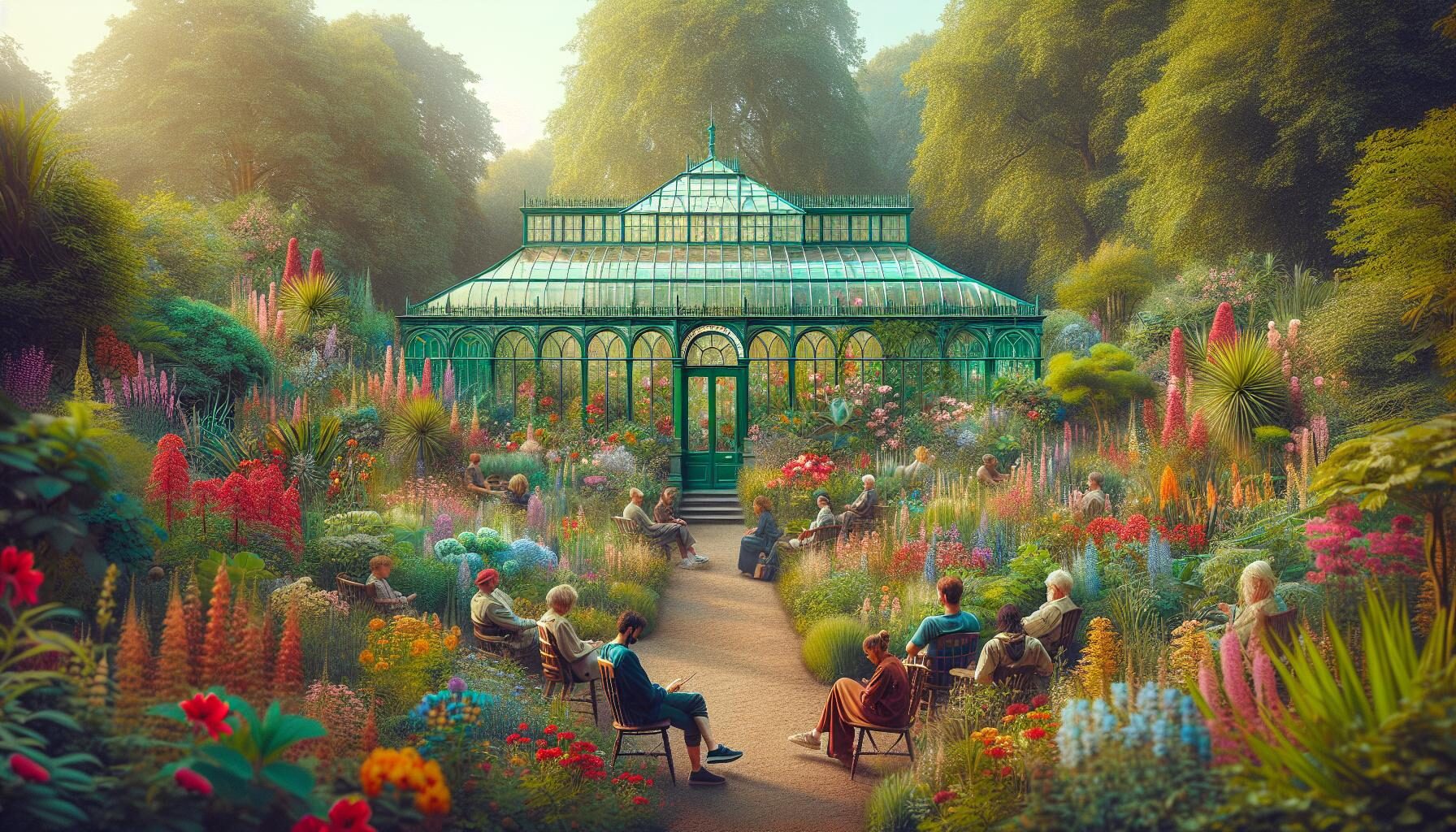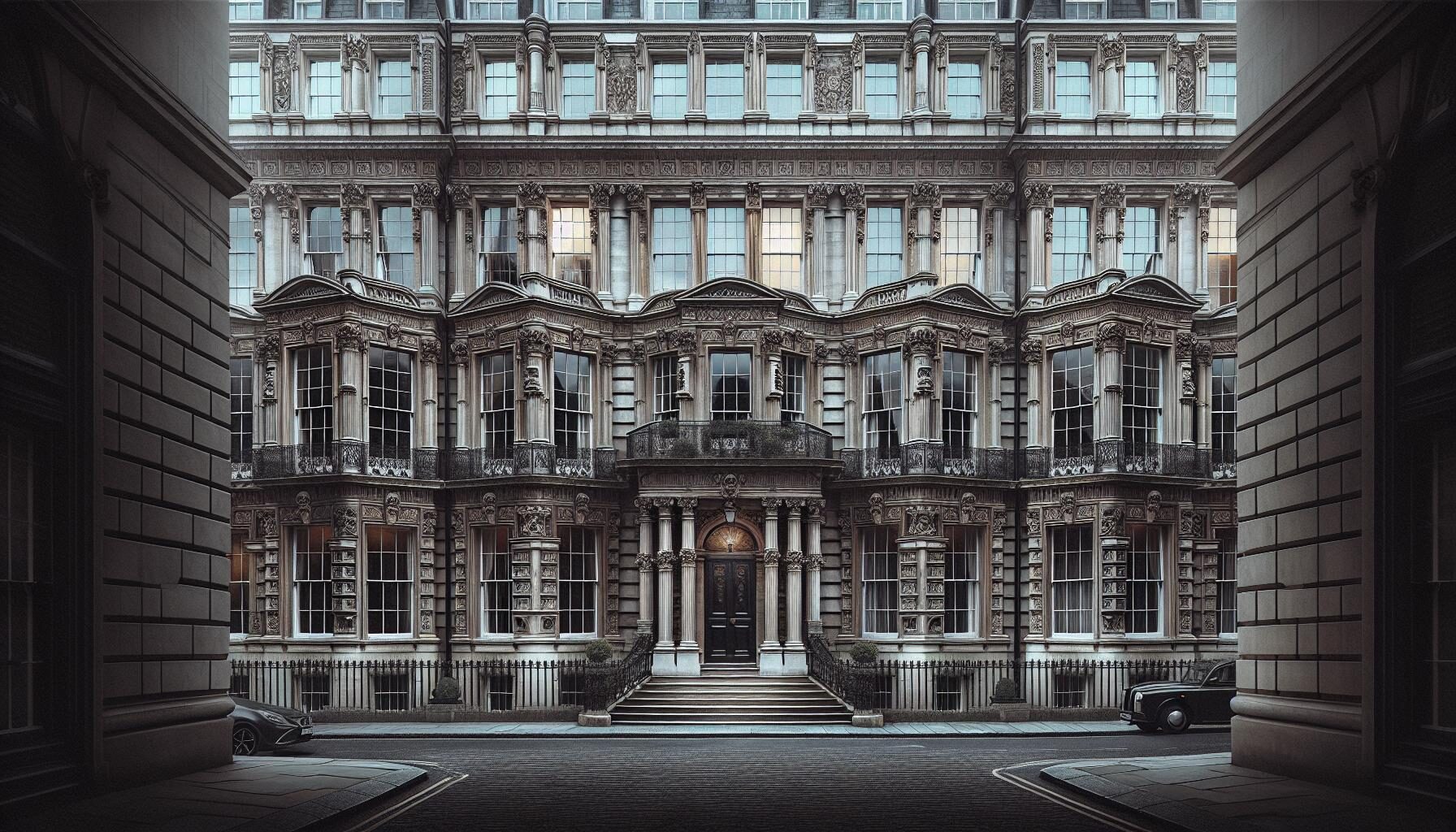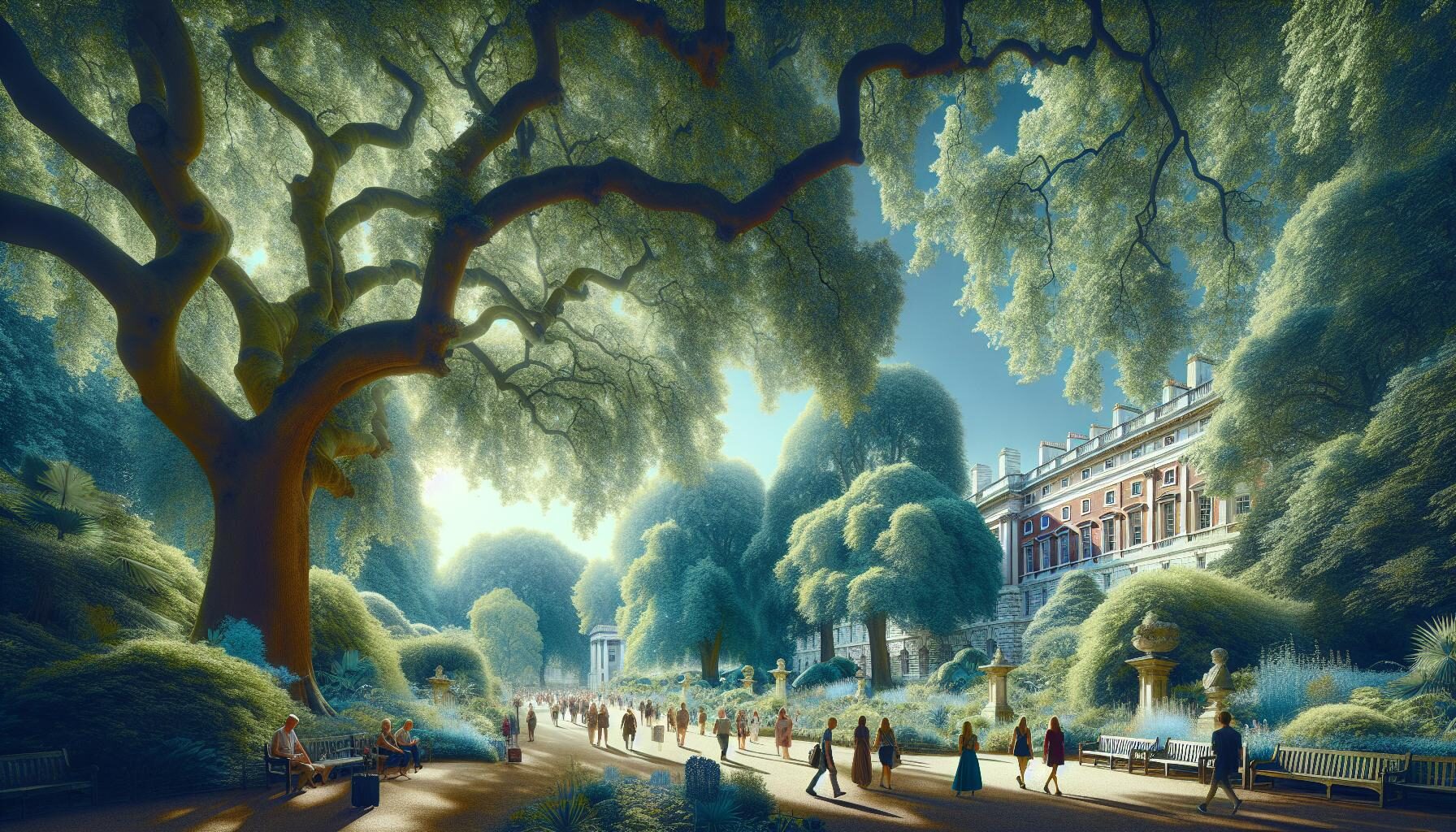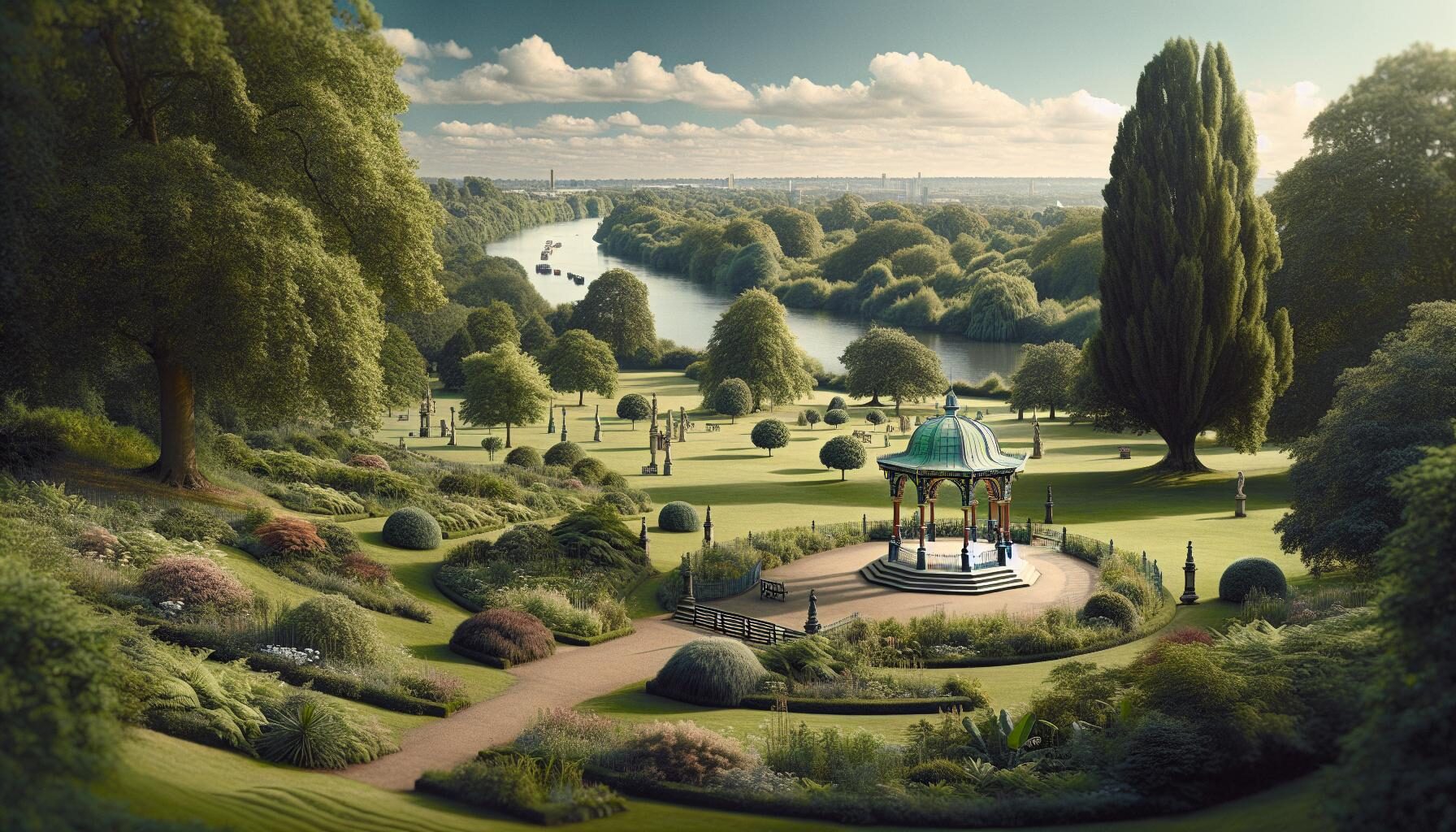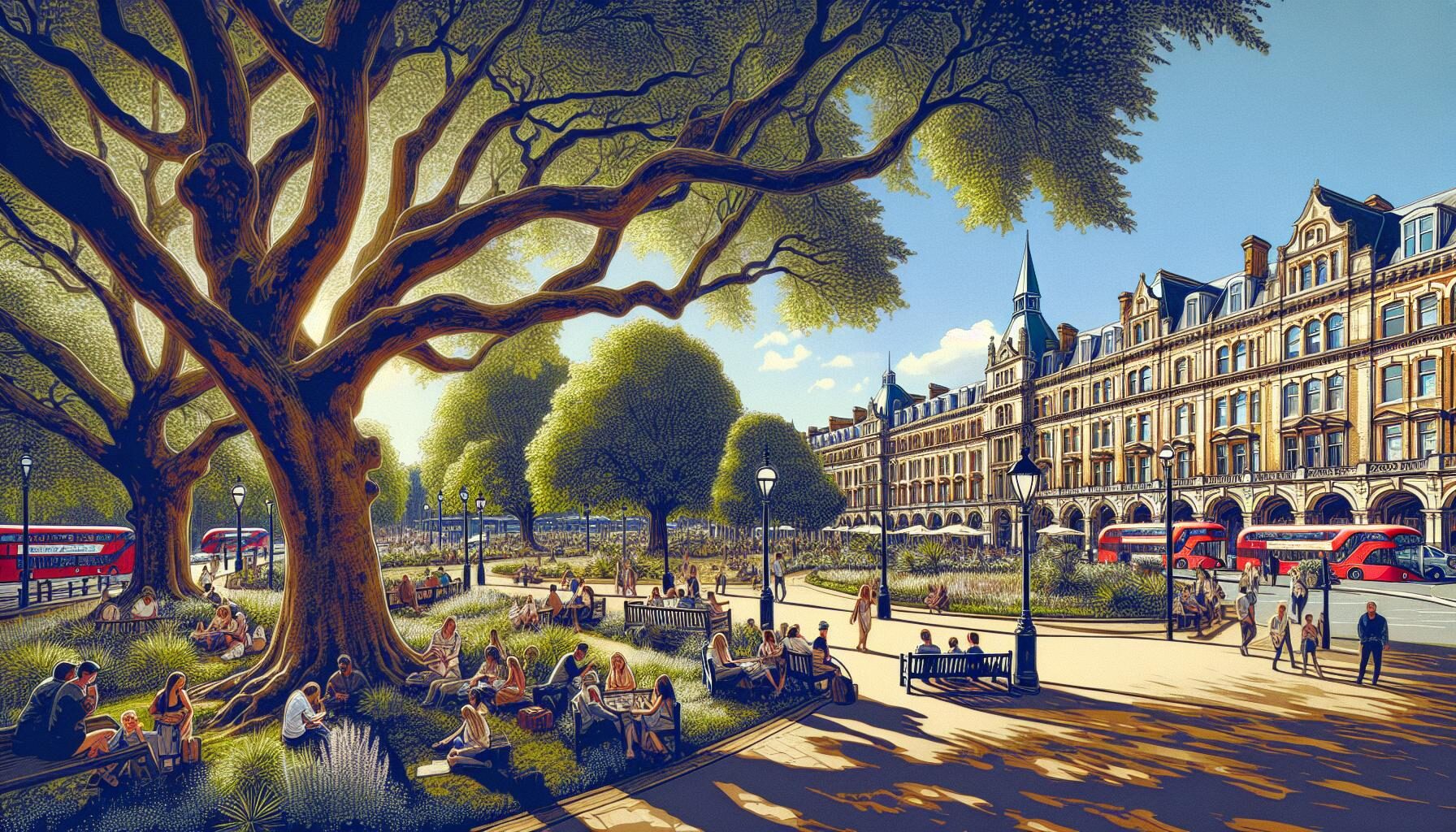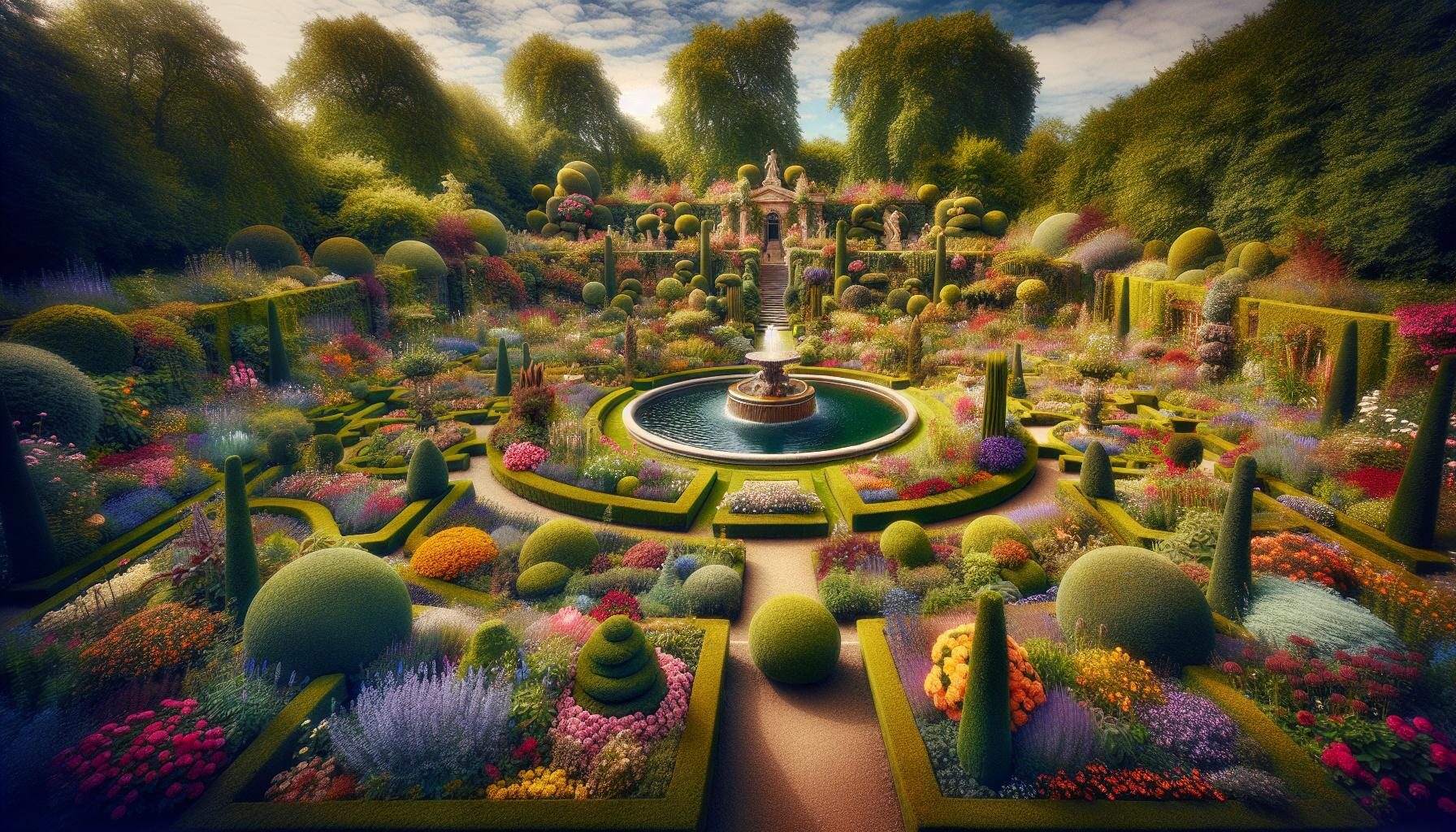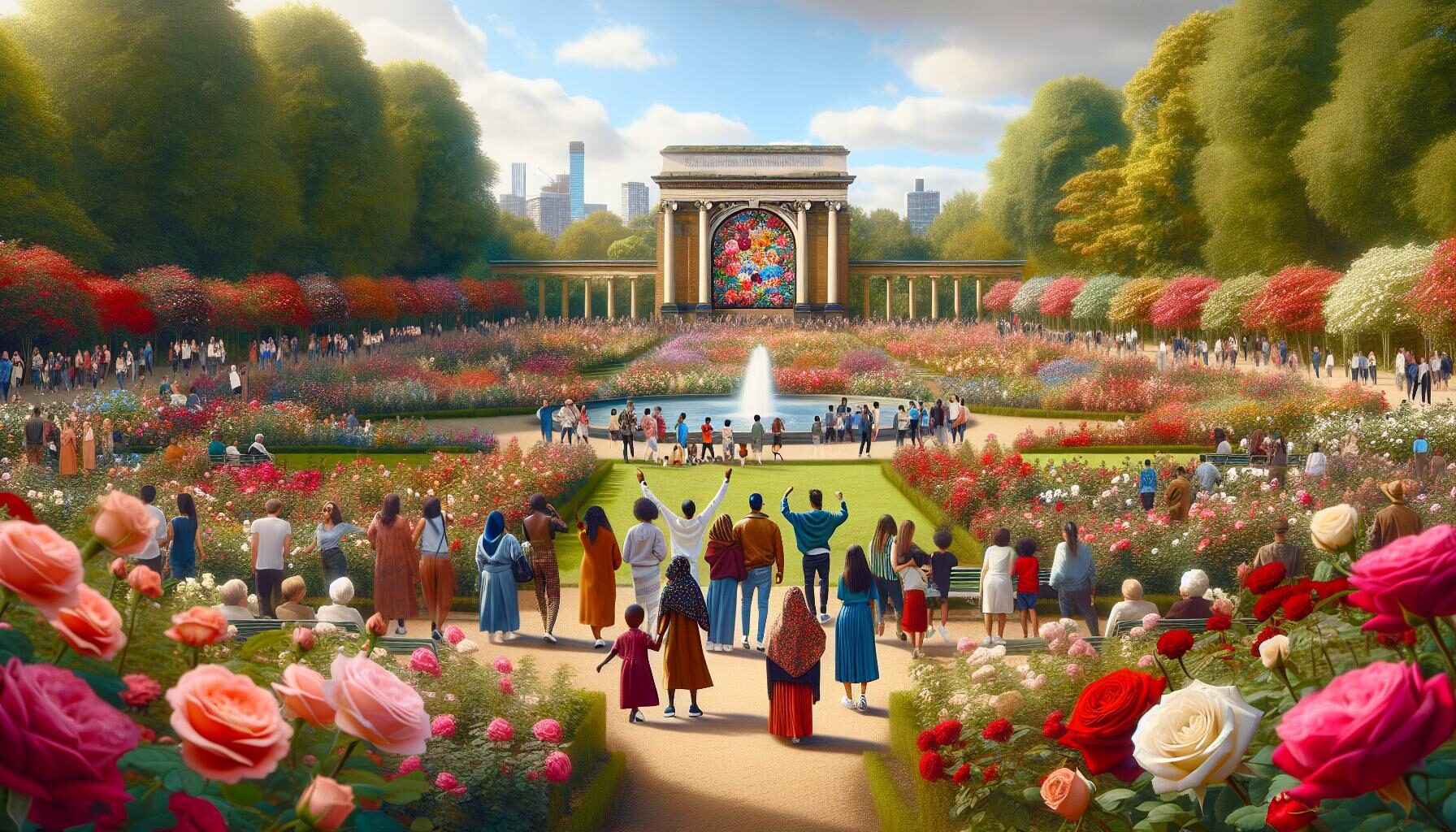Just a stone’s throw away from our London hotel, we’ve discovered a true urban oasis – Hyde Park. It’s one of the city’s largest and most beloved green spaces, and it’s right on our doorstep.
We’re eager to share our favorite spots and activities in this sprawling park. Whether it’s a leisurely boat ride on the Serpentine, a visit to the historic Speaker’s Corner, or a stroll through the stunning Rose Garden, there’s something for everyone in Hyde Park.
So, if you’re staying with us, or even just passing through, don’t miss the chance to explore this gem. We promise it’ll add an unforgettable touch to your London experience.
History of Hyde Park
Diving into the rich history of Hyde Park certainly adds depth to our current experience of it. Established by Henry VIII in 1536 for hunting purposes, Hyde Park has since transformed into the stellar urban retreat we love today.
Initially, it was a private playground for royalty, adorned with deer and game for hunting. It wasn’t until 1637 that King Charles I decided to open the park to the general public. This generous act made Hyde Park a treasured green space for city dwellers and visitors alike.
In the 18th century, Hyde Park underwent a significant revamp under the guidance of Queen Caroline. She invested 20,000 pounds – a whopping sum at the time – to redesign and expand the park. Her aesthetic vision led to the creation of The Serpentine, the famous man-made lake loved for its tranquil boat rides.
Over the years, Hyde Park has continued to evolve, creating an intriguing mix of history and modernity. Known events such as the Great Exhibition of 1851 and concerts by world-renowned bands like the Rolling Stones, have marked their footprint in the park’s legacy.
Most notably, The Speaker’s Corner of Hyde Park, a beacon of free speech and open debate since the 1800s, remains an integral part of the cultural fabric. Its presence is a testament to the park’s long-standing tradition of promoting independent thought and discussion.
Here’s a snapshot of Hyde Park’s historical timeline:
| Event | Year | |
|---|---|---|
| 1. | Established by Henry VIII | 1536 |
| 2. | Opened to public by King Charles I | 1637 |
| 3. | Revamp by Queen Caroline (inception of The Serpentine) | 18th Century |
| 4. | Hosted the Great Exhibition | 1851 |
| 5. | Rolling Stones Concert | 1969 |
But history’s just one part of Hyde Park’s charm. Its verdant landscapes, tranquil vibes, and activity-rich environment make it an invaluable component of our London experience. So, amid all these historical remnants, let’s not forget to pause and appreciate the present beauty of Hyde Park. It’s a powerful reminder of London’s seamless blend of past, present, and future.
The Serpentine: A Central Attraction
As we venture deeper into the heart of Hyde Park, it’s hard to miss The Serpentine. Forming an elegant S-shape across the landscape, this man-made lake stretches approximately 40 acres, uniting nature and architecture in perfect harmony. Significantly, it is one of Queen Caroline’s lasting legacies, cementing Hyde Park’s status as an urban retreat back in the 18th century.
During summer months, The Serpentine becomes a hub of activity, the sight filled with rowboats and paddle-boards. The Serpentine Lido, a unique outdoor swimming area, welcomes sun seekers and swimmers to its captivating waters.
For wildlife enthusiasts, The Serpentine is a paradise. It is a thriving ecosystem for a variety of waterfowls and fish. From early mornings to dusk, one can observe swans, geese, herons among other species glide effortlessly, bringing wildlife experiences right into the heart of London.
Adjacent to The Serpentine, visitors can find the Serpentine Galleries. A blend of modern and contemporary art, these twin galleries hold five exhibitions each year, presenting artwork from the world’s top artists. With free entry, these galleries attract art lovers and curious minds, expanding the park’s appeal beyond the natural realm.
On the other side stands the Serpentine Bar & Kitchen. Offering a scenic view of the water, it’s a place to unwind after a long day exploring. Serving British favorites and seasonal dishes, it integrates sustainability by sourcing local ingredients, contributing to Hyde Park’s ongoing commitment to the environment.
The splendor of The Serpentine isn’t confined to daylight hours either. As twilight descends, the water’s surface shimmers with the reflecting colors of the darkening skies, presenting a sight that has inspired poets and lovers for ages. In this way, it underlines Hyde Park’s allure as a place where the past and the present intertwine, creating a canvas that keeps evolving, just like the city it is nestled in. No complete London experience can evade this seamless blend of history, beauty, art, and activity that The Serpentine offers.
Activities and Attractions in Hyde Park
If we’re talking about Hyde Park, we can not overlook the variety of activities and attractions it offers. It’s more than just a pretty landscaped expanse – it’s an exhilarating hub of rich history, iconic architecture, captivating wildlife, and unforgettable experiences.
For outdoor enthusiasts, The Serpentine provides an idyllic setup for a host of recreational activities. Whether it’s taking a leisurely stroll around the lake, engaging in water-based activities like rowing and pedalo, or swimming in the lido during the summer, it’s all here.
For nature lovers and birdwatchers, Hyde Park hosts an astonishing array of flora and fauna – a testament to its significance as a prime habitat for diverse wildlife species. It’s not unusual to come across swans, herons, and a variety of ducks in the park.
Let’s not forget the seeker of culture among us. Adjacent to The Serpentine is the iconic Serpentine Galleries. Exhibiting avant-garde and thought-provoking modern and contemporary art pieces, it’s a must-visit for art enthusiasts. Right next door, we find the equally distinct Serpentine Bar & Kitchen, offering a taste of London’s modern gastronomy scene with its exciting menu and inviting ambiance – a perfect end to a day of exploration.
An exciting aspect of Hyde Park is its everchanging event calendar. The park hosts a multitude of events throughout the year, ranging from concerts and film screenings to sports events. There’s always something happening here that adds sparkle to the London experience.
Hyde Park teems with activities and attractions that cater to a wide range of interests. A visit here isn’t just about whiling away the time – it’s about soaking in the park’s timeless charm, one unforgettable experience at a time.
Exploring Speaker’s Corner
The richness of Hyde Park doesn’t stop at wildlife encounters and pedalo rides at The Serpentine. Let’s navigate to another fascinating corner of the park – Speaker’s Corner. A traditional hotbed of free speech, this place is steeped in history.
Located near the Marble Arch, Speaker’s Corner breathes life into the concept of public debates. It’s where anyone can step up on a soapbox and air their views to the listening crowd. The rules are simple: speeches must be lawful. It’s an embodiment of the democratic spirit, something that makes not just Hyde Park, but London itself unique amidst other world cities.
Walking around Speaker’s Corner, you’ll feel the hum of passion and the strength in diversity of opinions. The topics range far and wide; politics, religion, human rights — there’s no telling what you might hear in the course of a day. People flock here from around the world to speak or to listen. Some even come with a regularity that’s made them Hyde Park legends in their own right.
A short distance away, you’ll find the Reform Tree, a historic elm tree under which the Reform League members held meetings in the 1860s. Though it’s no longer standing, a plaque commemorates this aged symbol of peaceful protest in Hyde Park. A reminder from the past, telling a tale of free speech, of the roots of our democracy.
Now you might ask, “What about the rest of the week?” Well, Speaker’s Corner isn’t solely a Sunday phenomenon. Any day of the week, this corner of Hyde Park welcomes passionate discussions and audience engagement. It’s just that Sundays happen to be the most popular, gathering the biggest crowds. Who knows, maybe during your visit, you’ll feel the pull to step up and share your thoughts with the world.
And there’s more to Hyde Park. The next attraction on our list is just a stone’s throw away…
Hyde Park’s Rose Garden
Yet another of Hyde Park’s many attractions is the serene Rose Garden. As we immerse ourselves in the majesty of the park, the roses’ vibrant hues offer a delightful visual feast.
Designed in 1994 by eminent landscape architect, Colvin Moggridge, the garden is a harmonic blend of glorious roses and enchanting sculptures. It’s located near Serpentine Road, sandwiched between the Serpentine Lake and the Serpentine Gallery.
The Rose Garden flourishes in the summer when the rose bushes are in bloom. During this time, the garden becomes a vivacious painting of pinks, reds, and yellows. It’s not just a spectacle for your eyes either; the garden’s aroma is an olfactory treat too. Over 60,000 tulip bulbs also decorate the grounds in April and May, giving us a splash of radiant colors before the summer roses take center stage.
Hyde Park’s Rose Garden is not just a sanctuary for nature lovers but also for art enthusiasts. The garden’s layout skillfully interweaves rose bushes with ten etchings by Scottish artist Bill Woodrow. His bronze sculptures, collectively known as the “Royal Parks Series,” explore various ecological themes, adding much depth to the garden’s aesthetic.
Among the sculptures, the iconic “Leaf Fields” garners a significant amount of attention. This bronze piece showcases a theme of recycling, with its motif of reclaiming bronze from discarded weaponry. Such pieces remind us of the park’s concerns regarding ecological balance.
Before we move on to our next Hyde Park highlight, let’s take another moment to soak in the Rose Garden’s beauty, to breathe in the delicate aroma of roses, and to contemplate on Woodrow’s thought-provoking sculptures. Indeed, the Hyde Park’s Rose Garden is one of the park’s most beloved and visited spots, serving as a haven of tranquility for both locals and tourists alike.
Ensuring we explore every corner of Hyde Park, our next stop is the park’s vast range of recreational activities, from boating to horseback riding. As we have seen from our stop at the Rose Garden, be prepared to discover that Hyde Park is not just a park; it’s an adventure waiting to unfold.
Conclusion
We’ve journeyed through Hyde Park’s Rose Garden, a breathtaking oasis near our London hotel. Its vibrant roses and awe-inspiring sculptures have left us spellbound, showcasing nature’s beauty and the power of art. From the explosion of color in summer to the carpet of tulips in spring, it’s a paradise that changes with the seasons. The thought-provoking themes in Woodrow’s sculptures add an extra layer of depth to this tranquil retreat. But remember, Hyde Park has more to offer beyond this garden. We encourage you to step outside and continue exploring this gem in the heart of London.
When was the Rose Garden in Hyde Park designed and by whom?
The Rose Garden in Hyde Park was designed by landscape architect Colvin Moggridge in 1994.
Where is the Rose Garden located in Hyde Park?
The Rose Garden is located near Serpentine Road within Hyde Park.
What flowers does the Rose Garden host?
In summer, the Rose Garden blooms with colorful roses, and in spring, it hosts over 60,000 tulip bulbs.
Who is the artist behind the sculptures in the Rose Garden?
The sculpture series “Royal Parks Series” in the Rose Garden is created by artist Bill Woodrow.
What themes do Woodrow’s sculptures in the Rose Garden highlight?
Bill Woodrow’s sculptures in the Rose Garden, like “Leaf Fields,” highlight ecological themes.
What does the Rose Garden offer to visitors?
The Rose Garden offers visitors a tranquil escape, featuring a wealth of colorful flowers and thought-provoking sculptures that combine to create a sanctuary for nature and art lovers.
Are there more recreational activities in Hyde Park aside from the Rose Garden?
Yes, Hyde Park offers numerous recreational activities beyond the Rose Garden, as suggested in the article.

